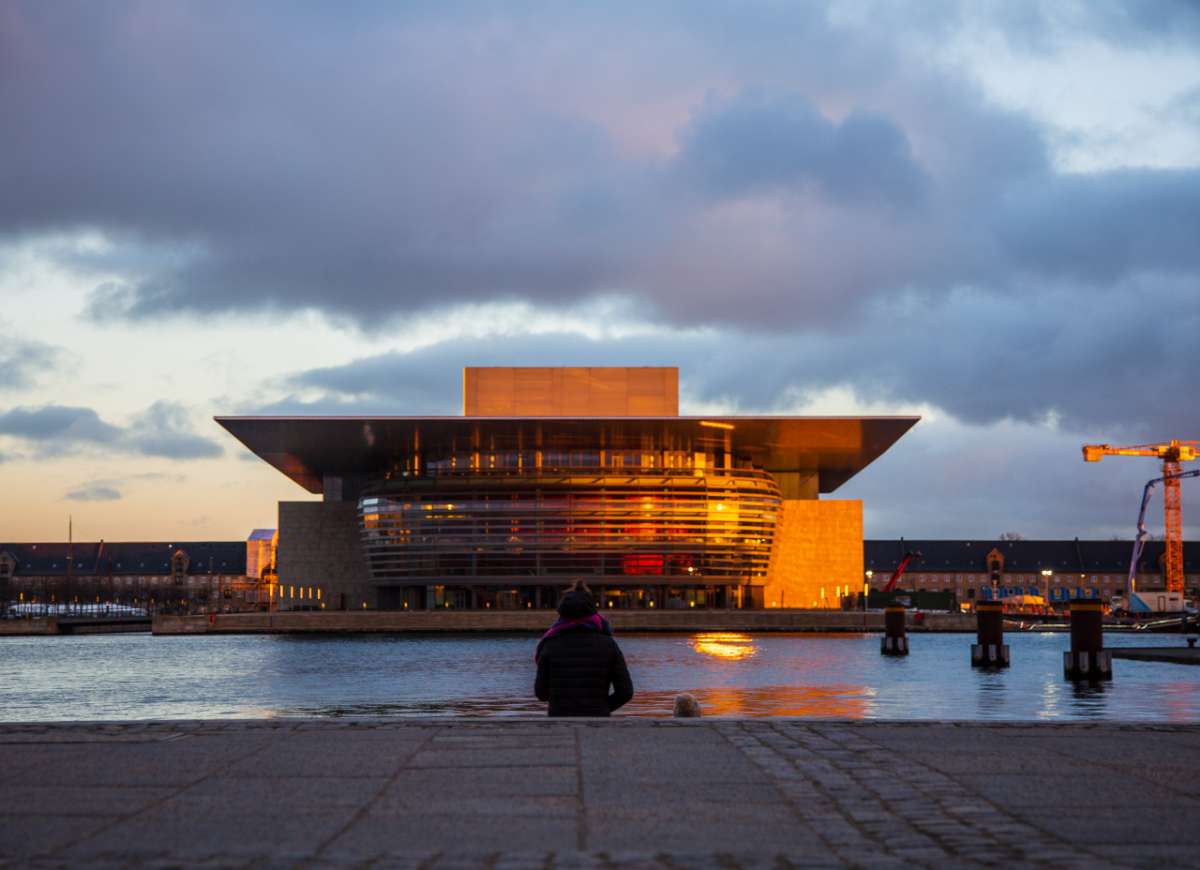Europe Art & Culture, Cities
A design odyssey through Copenhagen

As a global hub for exceptional design and with the locals’ passion for cycling, the Danish capital of Copenhagen exudes a vibrant buzz.

As a global hub for exceptional design and with the locals’ passion for cycling, the Danish capital of Copenhagen exudes a vibrant buzz.
Perched on a sturdy bike on a crystal-clear summer’s day, there’s a hint of a breeze as I whizz along a path through leafy Christiania, Copenhagen’s former hippie neighbourhood. Tiny, rustic houses are bright blobs of colour against the lush greenery. Noma, the world’s top restaurant, is glinting in the sun across the lake.
I’ve joined an eager group of 10 to explore the Danish capital. We wind our way through streams of elegantly dressed cyclists, crossing roads, cycle paths and special bridges that link various neighbourhoods.
Copenhagen is often ranked as the world’s most bike-friendly city, and nine out of 10 Danes own a bike. Bikes outnumber cars in the city centre and about 40,000 cyclists cross Queen Louise’s Bridge every day. Even Crown Princess Mary (who was born in Tasmania) has been spotted taking her children to school on a cargo bike. While Copenhagen has been admirably making great strides to be the world’s first carbon-neutral city by 2025, it was announced last year it won’t make the deadline.
Cycling in a new city can be daunting, so I’m pedalling along with Alice Lempel Søndergaard on Be Copenhagen’s design tour. One of the waterfront’s gems, the Royal Danish Library’s sharp glittering extension — the Black Diamond — is our first stop. Close by is the Danish Architecture Center, BLOX. The harbour swimming pool in front is filled with hundreds of chattering young people, sunbathing and swimming. Near Copenhagen University, the circular Tietgen student housing and interior garden is one of the most beautiful buildings I visit.
Sondergaard reveals she was sceptical when the city began to clean up the harbour about 25 years ago. “I thought not in a million years will people use the harbour for bathing,” she says. “What I couldn’t imagine was how it would transform the city.”
The best place to get a bird’s eye view of the city is from the top of CopenHill, a waste-to-energy plant (also used for hiking, climbing and as a ski slope in winter). Part of the city’s sustainability drive, the plant burns 440,000 tons of waste to make clean energy for 150,000 homes annually.
Next to the famous Tivoli Gardens, my hotel, Villa Copenhagen, is proud of its green credentials. Housed in the former general post office, the 1912 Neo-Baroque building, which has been sensitively restored, reopened in 2020. The hotel is home to the city’s only 25-metre outdoor rooftop pool, warmed by excess heat from the hotel’s cooling system. The original courtyard where horses once trotted is now a buzzy light-filled lobby with people enjoying pre-dinner drinks. “We wanted to be open for all of Copenhagen — especially for young people,” says Tom Cludts, Director of Revenue.
Breakfast is served in the rambling former post office sorting room. Around every corner of the hotel are charming little pockets of Scandi armchairs that I’d like to pop in my suitcase and take home. Later, I eat in Brasserie Kontrast, which sources local sustainable ingredients (think tuna, halibut, cabbage).
Inspired by my stylish digs, I set off the next day for Designmuseum Danmark. Nikolina Olsen-Rule gives me a quick tour of the museum, sparkling after its recent renovation. “It’s a different world we are waking up to,” she says.
Rather unkindly described as a “warren of rooms filled with chairs” in the past, the refurbished museum now focuses on how design can meet challenges such as climate change.
I’m entranced by beautiful biodegradable funeral urns as a greener way of sending folk into the next world. A small 19th century chest, which typically contained a person’s entire wardrobe, seems minute compared to today’s walk-in robes. The galleries with classic chair designs and Danish silver shouldn’t be missed.
For celebrity spotting, nothing beats the iconic Hotel D’Angleterre. While I’m having an afternoon drink, I see American author, Fran Lebowitz, who is just about to step out into Kings New Square.
Later in the day, checking into 25hours Hotel proves exciting as my arrival coincides with the opening party. The reception is temporarily in a side room, and I queue behind a couple and their dog while the city’s cool crowd flit around. I’m told to expect a surprise in the lift and the doors open to reveal a pop-up oyster bar within — good for snacking though tricky when I try to squeeze in my suitcase. The colourful hotel is a fun stay and NENI restaurant is perfect for people-watching. Nearby is the 17th-century Trinity Church where I’m lucky to catch a choral recital.
Copenhagen is one of the world’s top culinary destinations. Noma has scooped the World’s 50 Best Restaurants list five times but, sadly, chef René Redzepi recently said it will close at the end of 2024. Geranium, on the eighth floor of the National Football Stadium, is the current world number 1. For design lovers, it’s a great time to visit the city as Copenhagen is the UNESCO World Capital of Architecture for 2023.
On my way to the airport, I’m pleasantly surprised when my taxi turns out to be a Tesla. The friendly driver, a former refugee, is enthusiastic about his adopted homeland and tells me how genuine Danish people are. As we talk, I realise it’s people who are at the heart of a city and people who have shaped such an inspiring place.
Mary O’Brien was a guest of Villa Copenhagen.
Latest Articles
Don't miss the latest from Luxury Travel
